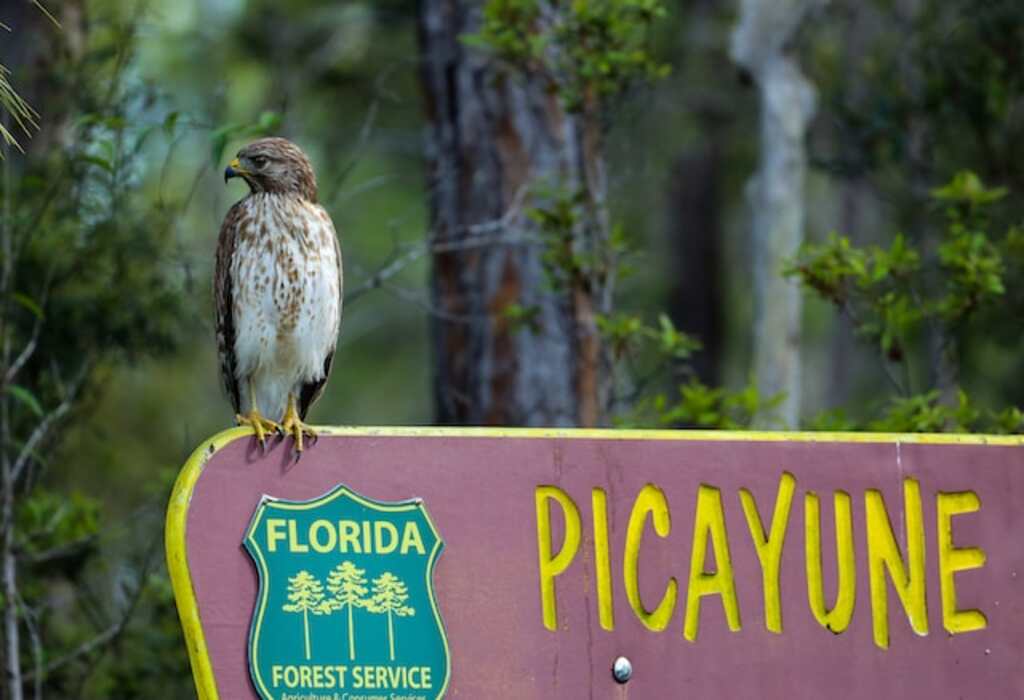Hold on to your corn cobs and get ready for a beak-to-grain investigation! Do Hawks Eat Corn? These remarkable birds of prey have captured our attention for centuries, but their diet remains a mystery.
From small mammals to birds, reptiles to insects, hawks are known for their diverse palate. Join us as we uncover the truth behind the corn conundrum and gain a deeper appreciation for these magnificent hunters.
Table of Contents
- 1 Key Takeaways
- 2 Understanding the Diet of Hawks
- 3 The Nutritional Value of Corn
- 4 Observations of Hawks in the Wild
- 5 Research on Hawk Diets
- 6 Hawks and Agriculture
- 7 The Role of Corn in Hawk Diets
- 8 Do Hawks Eat Corn?
- 9 Other Factors Affecting Hawk Diets
- 10 Hawks and Human Interaction
- 11 Further Research and Resources
- 12 Frequently Asked Questions
- 13 Conclusion
- 14 Author
Key Takeaways
- Hawks have a diverse diet that includes small mammals, birds, reptiles, and insects, but they are also opportunistic predators that adapt to prey availability and will eat carrion and human refuse.
- Hawk conservation efforts seek to balance protection of crops and the natural ecosystem, as the impact of corn farming on hawk populations is complex and can lead to habitat destruction and displacement of prey species.
- The presence of corn can increase prey availability for hawks, but pesticides and other chemicals used in corn farming can have adverse effects on hawk populations.
- Predator-prey interactions between hawks and their prey are influenced by hunting behavior and environmental factors, and the decline in small mammal populations due to habitat loss can affect hawk food sources.
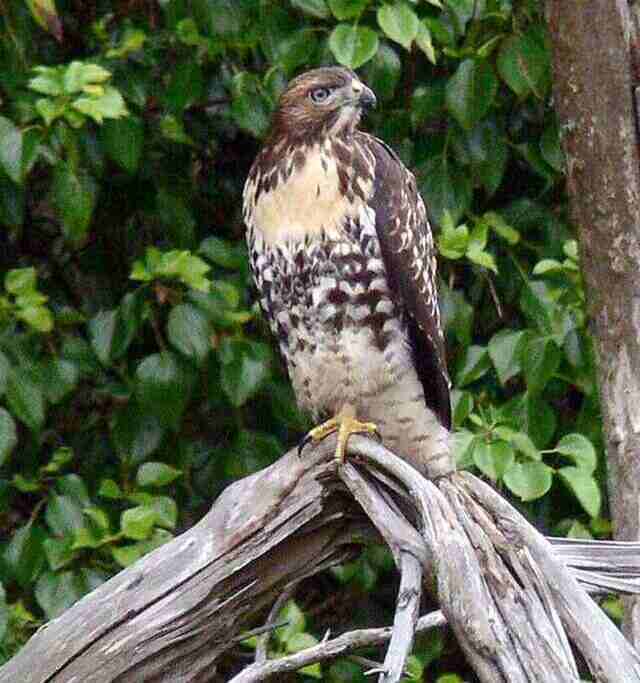
Understanding the Diet of Hawks
The examination of the diet of hawks is important in understanding their role in the ecosystem and potential impact on prey populations. Hawks are known for their hunting skills and have a diverse food preference depending on the species.
Some hawks prefer small mammals like mice, while others hunt for birds, reptiles, amphibians, and insects.
Hawks are also opportunistic eaters and will consume carrion or even scavenge food from other predators.
However, it is unlikely for hawks to eat corn, as it does not fit their food preferences. Hawks are carnivores and have specific dietary needs, including high amounts of protein and fat, which are not found in corn.
Therefore, the nutritional value of corn is not relevant to the diet of hawks.
The Nutritional Value of Corn
Corn is a rich source of carbohydrates, fiber, and essential vitamins and minerals. It contains high levels of vitamin A, which is essential for maintaining healthy eyesight, and vitamin C, which supports the immune system.
Additionally, corn also contains important minerals like magnesium, potassium, and phosphorus, which are essential for various bodily functions.
While corn is a staple food for many human populations, it is not a primary food source for most animals.
Although some birds, like chickens and turkeys, can digest corn with ease, other animals, like hawks, do not typically eat corn in the wild.
Hawks are carnivorous birds that hunt for prey, such as small mammals, birds, and reptiles.
Observations of hawks in the wild reveal that they do not typically eat corn, as it is not a part of their natural diet.
Here’s a table outlining the nutritional value of corn per 100 grams:
| Nutrient | Amount |
|---|---|
| Calories | 96 |
| Carbohydrates | 21 grams |
| Protein | 3.4 grams |
| Fat | 1.2 grams |
| Fiber | 2.4 grams |
| Vitamin C | 6.8 mg |
| Vitamin B6 | 0.1 mg |
| Folate | 42 mcg |
| Potassium | 270 mg |
| Magnesium | 37 mg |
Please note that these values may vary depending on the specific variety of corn and the method of preparation.
Observations of Hawks in the Wild
Observations of carnivorous birds in the wild reveal that their natural diet does not typically include corn. Hawks, in particular, are known for their hunting patterns, which involve capturing small mammals, birds, and reptiles as their primary source of sustenance.
According to research, hawks are opportunistic predators that adapt their hunting behavior to the availability of prey in their environment.
They have been observed hunting in a variety of ways, including soaring, stooping, and perching. Their keen eyesight and sharp talons allow them to capture prey with incredible accuracy and speed.
Based on these observations, it is unlikely that hawks would consume corn as part of their regular diet.
However, it is important to note that individual hawks may exhibit different behaviors and dietary preferences depending on their location and specific environmental conditions.
Further research on hawk diets may shed more light on these fascinating predators and their dietary habits.

Research on Hawk Diets
Research on hawk diets involves studies on prey selection and analysis of stomach contents. Through these methods, scientists are able to determine what types of prey hawks prefer and how their diet may vary depending on geographic location and time of year.
By analyzing the stomach contents of hawks, researchers can gain insights into the specific types of prey and their frequency in the hawk’s diet.
Studies on Prey Selection
Numerous studies have been conducted to investigate the factors that influence the prey selection behavior of hawks. Through these studies, researchers have identified some key factors that influence a hawk’s prey preferences and hunting techniques.
These include the size and shape of prey, the location of prey, the time of day, and the habitat in which the hawk is hunting.
For example, some species of hawks prefer to hunt in open fields where they can spot their prey from afar, while others prefer to hunt in wooded areas where they can use their agility and speed to maneuver through the trees.
Additionally, hawks are known to have a preference for certain types of prey, such as rodents, birds, and reptiles, and they may use different hunting techniques to capture each type of prey.
For example, hawks may use their talons to grab and kill small rodents, or they may swoop down from above to catch birds in mid-flight.
These studies have also revealed that hawks are opportunistic hunters, meaning that they will take advantage of any available food source, including carrion and even human refuse.
This information has been gathered through a variety of methods, including observational studies in the wild, as well as analysis of stomach contents from birds that have been captured and studied.
As we move into the subsequent section about the analysis of stomach contents, we can gain a deeper understanding of the specific prey items that hawks consume in their diets.
Analysis of Stomach Contents
Studying the contents of hawk stomachs provides valuable insights into their dietary habits and preferences. Researchers have found that hawks do not typically consume corn as a primary food source, but rather prefer small mammals, birds, and insects.
An analysis of stomach contents from various hawk species shows that they consume a diverse range of prey items, including rodents, rabbits, and snakes.
While corn is not a common prey for hawks, it is possible that their consumption of small mammals and insects could have an indirect impact on corn production.
For example, if hawks prey on rodents that feed on corn crops, the reduction in rodent populations could lead to increased corn yields.
Overall, the analysis of hawk stomach contents provides valuable information on their dietary habits and can help inform conservation efforts.
Moving forward, it’s important to continue studying the relationship between hawks and agriculture to better understand their impact on crop production.
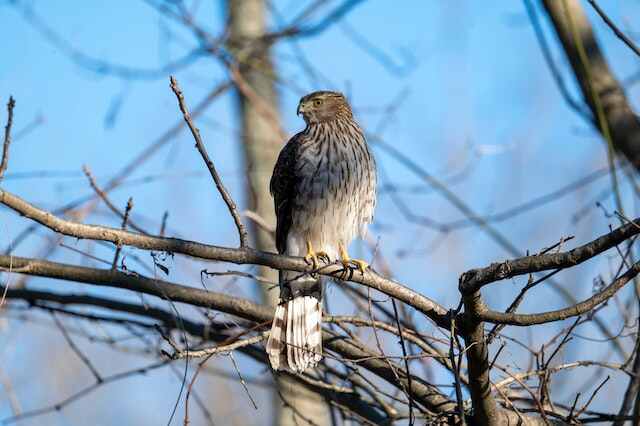
Hawks and Agriculture
Agriculture can be a significant food source for hawks, with one study indicating that corn makes up approximately 10% of a red-tailed hawk’s diet.
Hawks and crop damage have long been a concern for farmers, as they can cause significant economic losses.
However, it is important to note that hawks play an important role in controlling rodent populations, which can cause even greater damage to crops.
Hawk conservation efforts have therefore focused on finding a balance between protecting crops and the natural ecosystem. Understanding the role of corn in hawk diets is an important step in this effort.
It is fascinating to consider how these magnificent birds of prey have adapted to their environment and the challenges they face in finding food.
The Role of Corn in Hawk Diets
Corn plays a significant role in the dietary habits of red-tailed hawks, highlighting the intricate relationships between predators and their prey in the natural ecosystem.
While hawks are primarily carnivorous, they are known to consume a variety of supplementary foods, including corn.
Corn is a particularly attractive food source for hawks due to its high caloric content and availability in agricultural areas.
However, the impact of corn farming on hawk populations is complex and multifaceted.
While the presence of corn can increase prey availability for hawks, it can also lead to habitat destruction and displacement of prey species.
Additionally, the use of pesticides and other chemicals in corn farming can have adverse effects on hawk populations.
Thus, while corn may play a role in hawk diets, it is important to consider the broader ecological context in which these interactions occur.
The interplay between various factors affecting hawk diets is complex and multifaceted, and requires a holistic understanding of predator-prey relationships in natural ecosystems.
Do Hawks Eat Corn?
Yes, hawks are primarily carnivorous, and their diet consists of small mammals, birds, reptiles, and insects. While corn is not a typical part of their diet, there have been occasional observations of hawks consuming corn, although it is not a significant portion of their overall food intake.
Other Factors Affecting Hawk Diets
Predator-prey interactions are influenced by various factors, including hunting behavior and environmental factors.
Red-tailed hawks, like other predators, have adapted their hunting behavior to changes in their environment.
However, habitat loss has led to a 50% decline in the population of small mammal species, which are a primary food source for these hawks.
This has forced them to expand their diet to include more birds, reptiles, and insects.
In addition, environmental factors such as climate change and pollution can affect the availability of prey and the quality of their habitats.
As a result, hawks may have to adjust their hunting behavior to accommodate these changes.
Understanding the impact of these factors on predator-prey interactions is crucial for the conservation of these species and their habitats.
This knowledge can also help us understand how hawks and humans interact in shared environments.
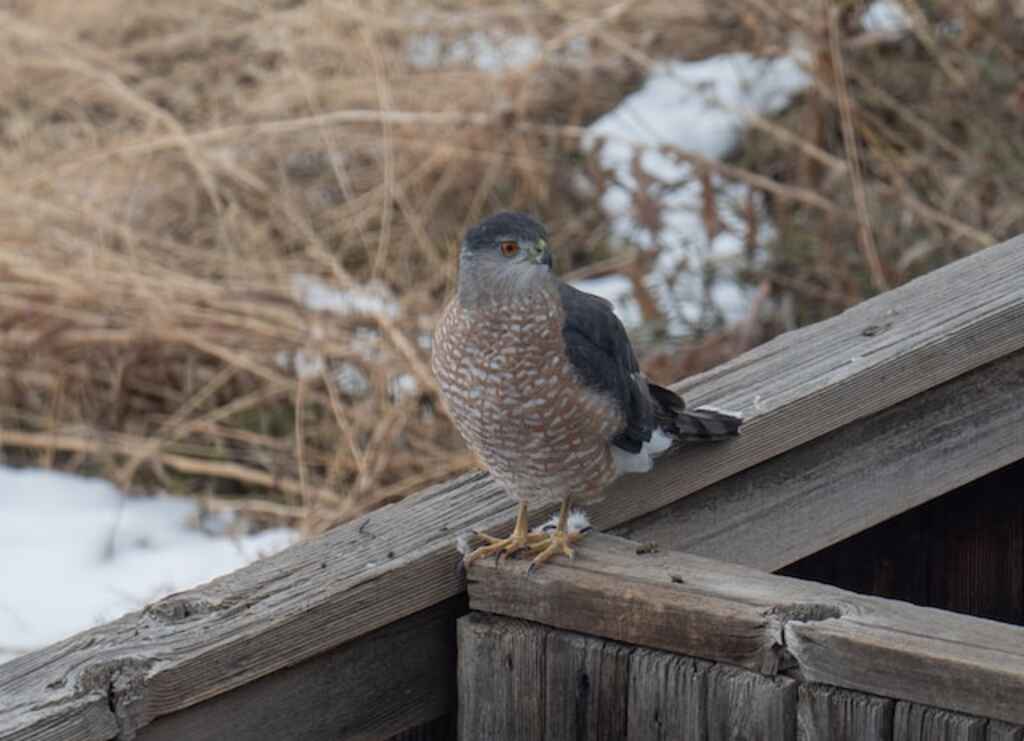
Hawks and Human Interaction
Conservation efforts have been implemented to protect hawks and their habitats, as their populations have been threatened by human activities such as urbanization and agriculture.
Conflicts between hawks and these industries have also arisen, with farmers and urban dwellers often viewing them as pests.
However, it is important to understand hawks as versatile predators and their role in the ecosystem, including their diets and feeding behaviors, to better manage these interactions.
Conservation Efforts
One of the key strategies in protecting hawks and their habitats is through the establishment of protected areas and wildlife reserves.
Conservation strategies aim to restore and protect habitats that are essential for hawk survival, such as nesting sites and hunting grounds.
Habitat restoration is also critical in ensuring that hawks have access to sufficient food sources and are not forced to migrate to less suitable areas.
Additionally, wildlife reserves provide a safe and undisturbed environment where hawks can thrive without the threat of human interference, such as hunting or habitat destruction.
However, conflicts with agriculture and urbanization pose significant challenges for hawk conservation efforts.
As human populations continue to grow, more land is being converted for agricultural and urban use, resulting in habitat loss and fragmentation.
This, in turn, can lead to increased human-hawk interactions, including the accidental killing of hawks through pesticide use or collisions with buildings and vehicles.
Conflicts with Agriculture and Urbanization
The encroachment of agriculture and urbanization into hawk habitats symbolizes the increasing threat of human activities to the survival of these raptors.
Agricultural conflicts arise when hawks prey on poultry and livestock. Farmers often resort to poisoning or shooting hawks to protect their livestock, leading to a decline in hawk populations.
Urbanization challenges arise when hawks lose their natural habitat to buildings and roads. Hawks also face a decline in prey availability in urban areas.
As a result, hawks are forced to hunt in unfamiliar areas, leading to a decline in their reproductive success.
These challenges require a balance between the conservation of these birds and the needs of human activities.
Hawks are important predators that contribute to ecological balance, and their survival is essential to maintaining healthy ecosystems.
Hawks as versatile predators can adapt to different environments and prey, making them a crucial component of the food chain.
Hawks as Versatile Predators
Versatile predators, hawks have the ability to adapt to different environments and prey, making them a vital component in maintaining a healthy ecosystem.
Their hunting techniques are diverse and include aerial attacks, perch and pounce, and still-hunting.
Hawks are known to feed on a variety of prey including small mammals, birds, reptiles, and even insects.
As top predators, they play a crucial role in regulating the populations of their prey and in turn, maintain the balance of the ecosystem.
Hawks also serve as indicators of the overall health of the environment, since they are sensitive to changes in their habitat and prey availability.
It is important to understand the diets of hawks to ensure the preservation of their habitats and avoid any potential negative impacts on the ecosystem.
Importance of Understanding Their Diets
Understanding the diets of hawks is crucial for preserving their habitats and maintaining the balance of the ecosystem.
As predators, hawks play a vital role in regulating the population of their prey species, and their feeding habits can have a significant impact on the ecological balance of their environment.
To better understand predator-prey dynamics and how hawks fit into the larger ecosystem, it is essential to study their diets in detail.
While some species of hawks are known for their preference for small mammals, others may feed on reptiles, insects, or even other birds.
By gaining a deeper understanding of the specific dietary habits of different hawk species, we can work towards preserving their habitats and ensuring that they continue to play a crucial role in maintaining the balance of the ecosystem.
Further research and resources are available for those interested in learning more about hawks and their diets.

Further Research and Resources
Further findings from scholarly sources can furnish fascinating facts about the feeding habits of hawks, including whether they consume crops such as corn.
For those interested in delving deeper into this topic, there are a variety of resources available that can provide additional information on hawk diets.
Here are five potential resources to consider:
- The Cornell Lab of Ornithology offers a wealth of information on birds, including hawks. Their website includes articles, videos, and interactive tools that can help you learn more about hawk feeding habits and other related topics.
- The Raptor Resource Project is another great resource for those wanting to learn more about hawks. This organization focuses specifically on birds of prey and provides educational resources, live webcams, and other tools to help people better understand these fascinating creatures.
- Books and academic journals can also be valuable resources for those interested in researching hawk feeding habits. Some potential titles to consider include ‘Hawks and Owls of North America: A Naturalist’s Guide’by Donald and Lillian Stokes and ‘The Raptors of Arizona’by Richard Glinski.
- Experts in the field of ornithology can also be valuable sources of information. Consider reaching out to professors, researchers, or other professionals who specialize in studying birds to see if they can offer any insights or recommendations for further research.
- Finally, joining a local birding group or organization can be a great way to connect with others who share your interest in hawks and other birds. These groups often provide educational opportunities, outings, and other resources that can help you expand your knowledge and understanding of bird feeding habits and behavior.
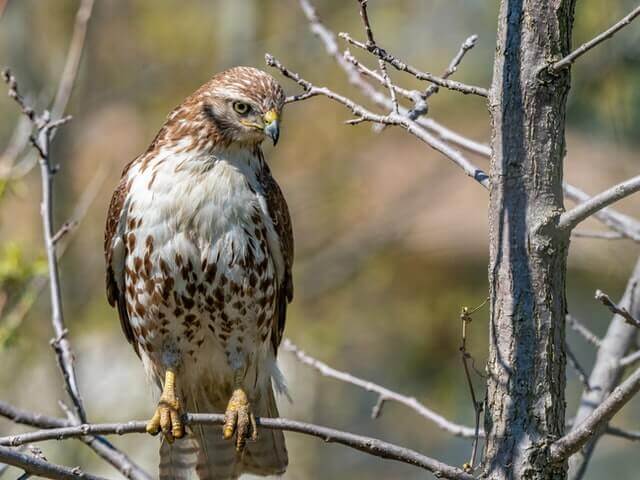
Frequently Asked Questions
How do hawks hunt for their prey?
Hawks use a variety of hunting techniques, including soaring, hovering, and stooping. They have a preference for small mammals, birds, and reptiles, but will also consume insects and fish. Their keen eyesight and powerful talons make them efficient predators in their ecosystem.
What is the average lifespan of a hawk?
Hawks have a varied lifespan depending on their species, ranging from 5 to 20 years in the wild. Breeding patterns and migration patterns also vary between species, with some hawks being more sedentary than others.
Are all species of hawks carnivorous?
Hawks are known for their carnivorous diet, but there are some herbivorous species. Hawk diet diversity varies greatly, and while some species may consume seeds and fruits, the majority of hawks rely on meat as their primary source of nutrition.
How do hawks adapt to changes in their environment?
Hawks have various adaptation techniques and behavioral changes to cope with environmental changes. They adjust their foraging behavior, breeding, and migration patterns. Such adaptations are crucial for their survival and ensure that they remain a successful predator in their ecosystem.
What is the impact of human activity on hawk populations?
Human intervention and habitat destruction have had negative impacts on hawk populations. Studies show that loss of habitat due to human activities is one of the main reasons for the decline in hawk populations.
Conclusion
Hawks are known for their predatory nature, and understanding their diet is crucial for their survival and coexistence with other species.
While hawks primarily feed on small mammals and birds, they are also known to incorporate a variety of plant material in their diet, including corn.
The nutritional value of corn, in particular, makes it a valuable source of sustenance for hawks.
Observations of hawks in the wild and research on hawk diets have shed light on the role of corn in their diet.
While hawks do consume corn, it is not a staple in their diet and is often consumed as a supplement to their primary prey.
Additionally, factors such as habitat, seasonality, and availability of other food sources can also impact a hawk’s diet.
Hawks and agriculture often find themselves at odds, as hawks can cause damage to crops and livestock.
However, understanding the role of corn in their diet can help mitigate conflicts and promote coexistence.
Further research in this area can aid in developing effective management strategies and conservation efforts.
In conclusion, while hawks do consume corn, it is not a defining aspect of their diet. Understanding the complexities of their diet can help promote coexistence and conservation efforts.
Hawks are like a puzzle, with each piece representing a different aspect of their diet and behavior.
By unraveling these pieces, we can gain a deeper understanding of these majestic birds and their place in the ecosystem.

